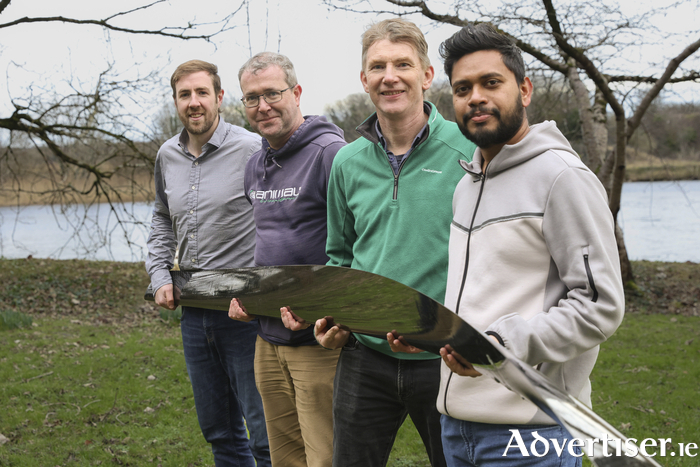University of Galway has announced successful testing of a next generation marine hydrokinetic turbine foil for renewable energy.
The technology was designed by US-headquartered global leader in marine energy ORPC Ireland and fabricated by ÉireComposites, based Inverin, Co Galway.
The testing programme is part of the €3.9 million European Commission’s Horizon 2020-funded CRIMSON project and involved 1.3 million fatigue cycles on the turbine foil – the highest number ever reported on a full-scale marine energy component in dry laboratory conditions.
The tests were led by the Sustainable and Resilient Structures Research Group at University of Galway, which is part of the Enterprise Ireland-supported technology centre Construct Innovate and the University’s Ryan Institute.
The 5m long foil is made from high-performance, carbon fibre reinforced polymer. It is shaped similarly to an airplane wing. When placed perpendicular to river or tidal currents, the foils spin under that force and the technology sends clean, renewable energy via an underwater generator. Three of these foils combine in the 80kW RivGen marine hydrokinetic energy turbine.
The technology underwent intense stress testing in the University’s Large Structures Testing Laboratory to demonstrate its ability to withstand operational loads over its design lifetime.
Prior to completing the testing campaign, a destructive static test was performed on the foil in order to demonstrate its structural integrity at loads well in excess of what is expected during operation in the marine environment.
Dr William Finnegan, Assistant Professor and Principal Investigator of CRIMSON at the University of Galway, said: “The findings from this full-scale structural testing programme help to de-risk ORPC’s technology and give insights that can be used for structural health monitoring and inform the next generation of testing standards. The combination of such high-level design and manufacturing with University of Galway’s state-of-the-art testing will improve the reliability of river and tidal energy devices as they move closer to commercial viability.”
Tomás Flanagan, Chief Executive of ÉireComposites, said: “ÉireComposites is delighted that the turbine foils we manufactured have performed so well during testing. The foils have a complex helical shape and are challenging to manufacture; they are a credit to the engineers and technicians who worked on the project. We’re delighted to see our work with ORPC Ireland, University of Galway, and the other partners coming to fruition and we’re excited about the commercial potential for marine hydrokinetic devices in delivering clean, sustainable energy. At a time when global interest is focused on achieving a net-zero emission future, it is great to be making advances in the technology that supports this global shift.”
Patrick Cronin, Director of European Operations at ORPC Ireland said: “ORPC are bringing clean, predictable, emission-free tidal and river energy to markets around the globe, and this important research is helping to maximise design efficiency and minimise power system costs as global demand for underwater renewable power systems continues to be strong. We are delighted to collaborate with our Irish research partners, University of Galway and ÉireComposites, to move our next-generation power systems to market, and we look forward to the next stage of the project.”
The test foil was designed by the team at ORPC Ireland and manufactured from a high-performance carbon fibre reinforced polymer by ÉireComposites, which are leading the CRIMSON Project, and incorporates recycled carbon-fibre material from Mitsubishi Chemical Advanced Materials, Germany.
The next phase of the project will trial the complete turbine in operational conditions at Consiglio Nazionale delle Ricerche’s large towing tank in Rome, Italy.

